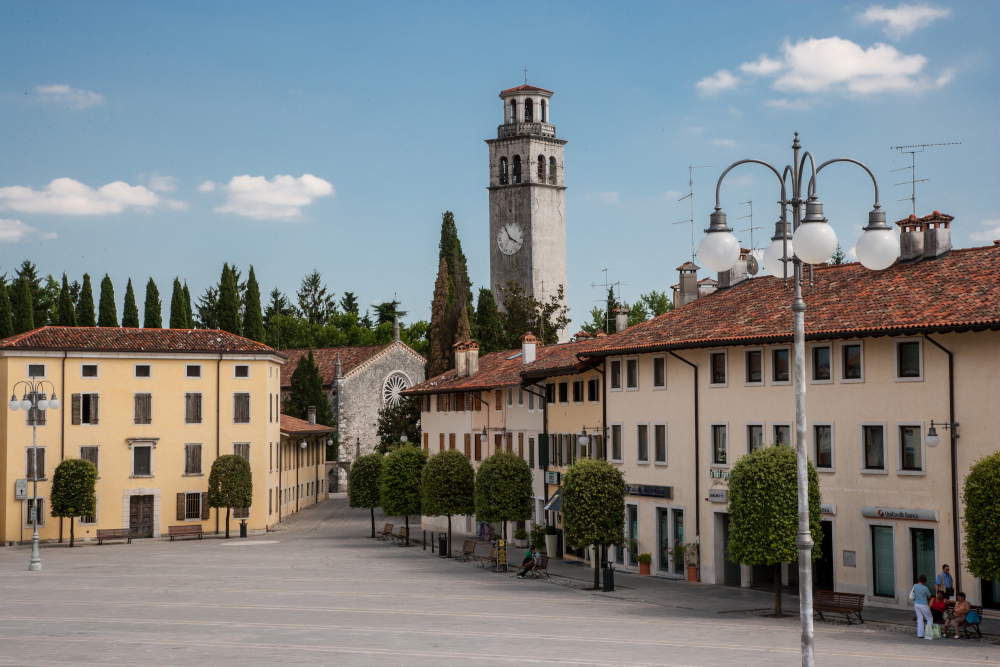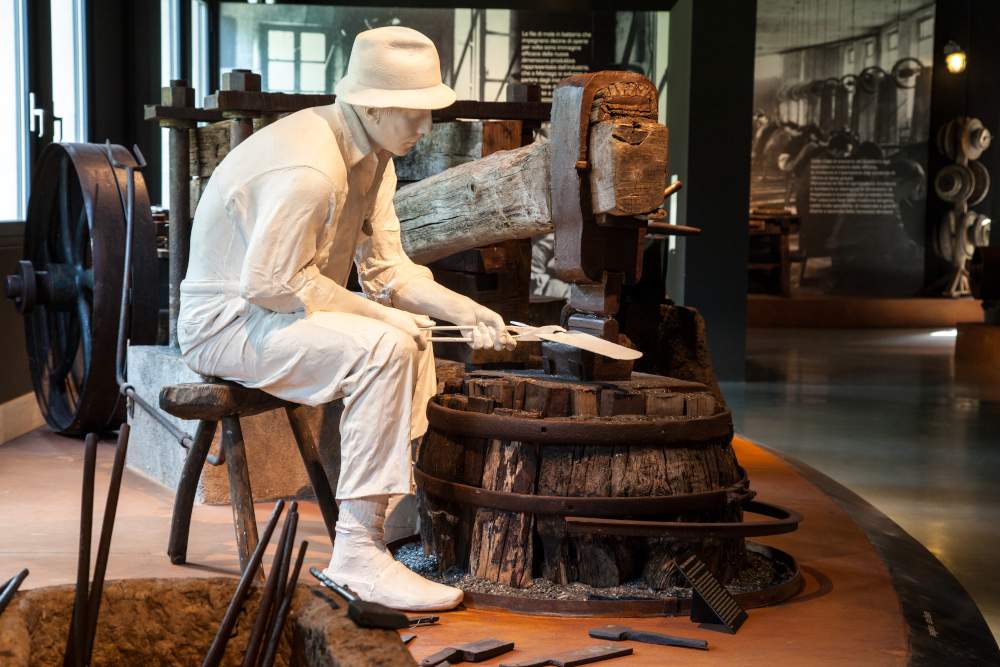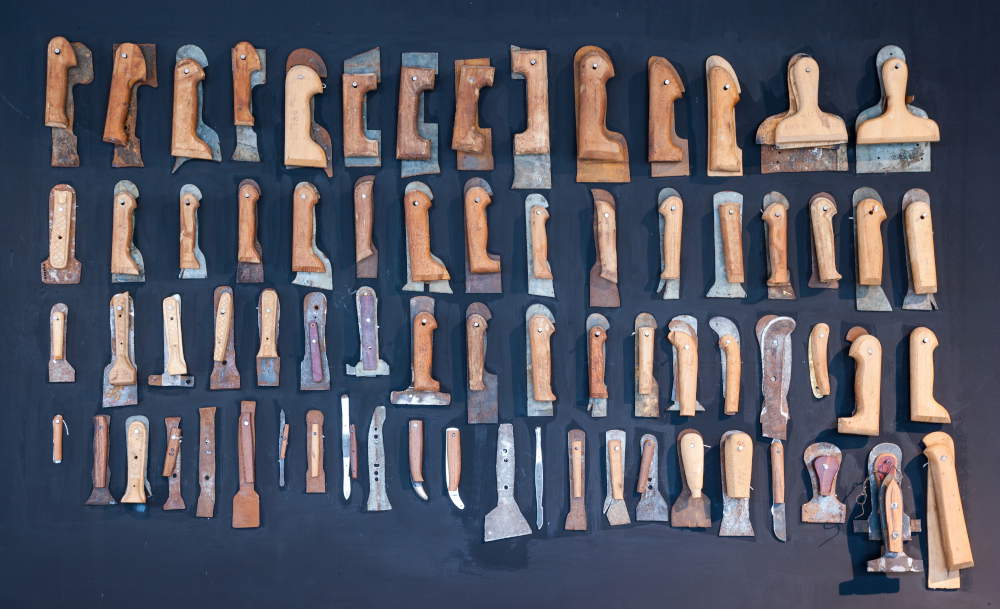Maniago, the Friulian town of about 12,000 inhabitants in the province of Pordenone, has become world-famous for its ancient tradition of making knives and all kinds of cutting implements. The beginning of the history of Maniago’s blacksmiths can in fact be traced back to 1453, when Nicolò di Maniago obtained permission from the Magistrato delle Acque of Venice to channel the water of the Colvera stream into an irrigation ditch, along which then later several beaters were built at elevation jumps, within which swords and pole arms for the Venetian Republic began to be produced in addition to tools for agriculture. Since then Maniago, now the seat of the Cutlery District, has been the birthplace of hundreds of blacksmiths and cutlers.
This ancient tradition is still recounted in a dedicated museum: the Museo dell’Arte Fabbrile e delle Coltellerie (Museum of Blacksmith Art and Cutlery), which is housed in the large industrial plant, a symbolic place in Maniago’s manufacturing history, which began its operations in 1907 as Co.Ri.Ca.Ma (Coltellerie Riunite di Caslino e Maniago). The factory was in operation until its closure in 1972 and employed hundreds of factory workers. Since 2009 it has become home to the museum, after being purchased by the municipality and recovered from a state of neglect.
The result is an exhibition itinerary that chronicles the birth and development of local and industrial production of cutting objects. The first part of the museum itinerary reconstructs the historical-productive phases, environments, and tools of Maniago blacksmiths, starting from the first iron beaters built along the irrigation ditch to the current metal induction and processing. In a subsequent section, the materials, shapes, and sizes of cutting objects, particularly the blade and handle, are experimented with and analyzed in their evolution. The history of local production is then told, ranging from tools used by farmers to those used for other specific trades, to showing new and modern tools, in which design also plays its part.
Another section is devoted to the knife as an ambivalent symbolic object, both in its function as an indispensable tool in daily life and in its use as a weapon, with examples from classical mythology to art history and folk traditions.
In 2016, Maniago’s citizens also began to take the lead in the heritage narrative through the collection, documentation, and enhancement of exhibits, in a participatory process as part of the LAMEMORIA room. An exhibition in the museum that revolves around six themes that are deeply interrelated, but at the same time independent in the narration of content; a multi-sensory journey that the public has the opportunity to freely experience. Six large maps have been reconstructed with the help of citizens, showing where workshops, workshops and dedicated companies are and were. 444 places of production mapped, each with its own history, characters and anecdotes, and presented in an exhibition born from the shared memory of so many people.



The museum is visited each year by thousands of people, eager to learn about the history of this small Friulian community considered among the most important blade-making capitals in the world. A museum venue that came into being thanks to a group of artisans and administrators who began collecting materials, aware of the uniqueness of Maniago in its close relationship with blades and with the desire to give life to a place where this centuries-long tradition could be told and preserved. He then began to gather disused machinery, semi-finished products, objects of common use in the workshops and documents: thus was formed the nucleus of the first museum itinerary located then at the Filanda, the current site of the Civic Library. The new exhibit inside the large industrial plant had to wait until April 25, 2009, when the ribbon was cut by one of the former workers who had worked in the factory since she was a young girl and who, at her 100th birthday on that day thirteen years ago, returned there on the occasion of the museum’s inauguration.
Building on its long-standing tradition, the museum also offers a great deal of educational focus for younger visitors, offering experiences both for kindergarten children who invent their own pocketknife after a visit and for older children who have the opportunity to try their hand at making a wooden spread created together with a local company. Then there is the Center for Interpretation on Crafts, which in the summer transforms into the hotbed of creativity with moments of meeting and craftsmanship.
The museum also has a large number of staff members who over the years have become involved in museum activities, such as guided tours, archival reorganization, technical advice on materials, and educational planning, and who in 2019 came together in theFriends of the Museum Association.
Thus, the Museum of Manufacturing Art and Cutlery is not a witness to a lost and vanished world, but rather to a productive reality that is still alive in the area and is still a continuous opportunity for dialogue and exchange.
For more info: www.museocoltelleriemaniago.it
 |
| Maniago's Museum of Craftsmanship and Cutlery: shared tradition becomes storytelling |
Warning: the translation into English of the original Italian article was created using automatic tools. We undertake to review all articles, but we do not guarantee the total absence of inaccuracies in the translation due to the program. You can find the original by clicking on the ITA button. If you find any mistake,please contact us.